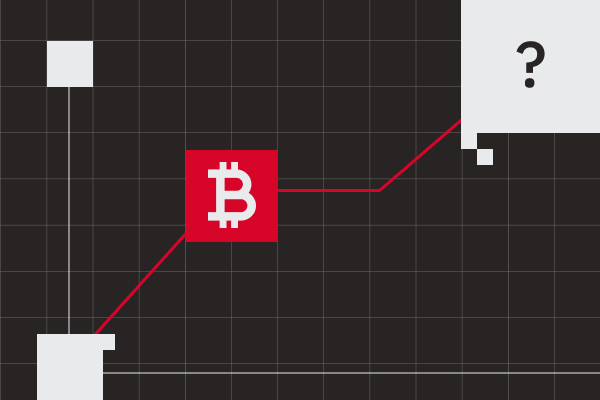Trading Signals 05/02 – 09/02
Will Bitcoin Reclaim Its All-Time Highs?

As the world of cryptocurrencies evolves, Bitcoin (BTC) remains at the forefront of the digital asset market. Its price fluctuations have sparked numerous debates and analyses in the financial sector, particularly given the historical highs reached in late 2017 ($19,783) and 2021 ($68,925).
In the last months of 2022, Bitcoin and the broader cryptocurrency market experienced a decline due to the collapse of FTX and FTX.US crypto exchanges. On November 11, 2022, both exchanges declared Chapter 11 bankruptcy. As FTX had significant investments in various crypto-related businesses and digital currencies, its downfall impacted the whole sector.
Even though Bitcoin has a track record of recovering after crashes, such rebounds can take months or even years. Despite Bitcoin officially regaining its losses from the FTX crash by mid-January 2023, it remains a highly volatile asset, with the aftermath of the FTX collapse still unfolding. Crypto exchange BlockFi, which had obtained a line of credit from FTX.US and was due to be acquired by it, filed for bankruptcy on November 28. Additionally, Gemini is still in the process of recovering assets held in its Gemini Earn program, which have been frozen since November 2022.
Market Factors Impacting Bitcoin’s Price and Historical Performance
Market sentiment plays a critical role in the price movement of any financial asset, including Bitcoin. The interplay between fear and greed can cause rapid price fluctuations, and understanding the current sentiment can help traders identify potential entry and exit points. Bitcoin’s price has experienced several significant milestones since its inception in 2009, such as the first Bitcoin purchase for two pizzas in 2010, the Mt. Gox exchange hack in 2014, the bull run in 2017, and the 2021 all-time high.
Institutional adoption and investment in Bitcoin have been on the rise, with major corporations such as Tesla, MicroStrategy, and Square allocating portions of their balance sheets to the digital asset. This trend has boosted overall market confidence and can contribute to price appreciation. The regulatory landscape for cryptocurrencies is continually evolving, with governments and financial institutions worldwide implementing new rules and guidelines. A supportive regulatory environment can help foster further growth and adoption of Bitcoin.
Market liquidity and trading volumes play a significant role in determining Bitcoin’s price stability. Higher liquidity and trading volumes can lead to lower price volatility and allow for more efficient price discovery. Bitcoin halving events occur approximately every four years and reduce the mining reward by half. These events have historically been associated with substantial price increases due to a reduced supply of newly minted coins entering the market. The latest halving event took place in May 2020.
Technical Analysis, Key Indicators, and On-Chain Metrics
For Bitcoin, key support levels include the $19,648 and $25,426 price points, while significant resistance levels are found at $32,412 and $37,000. Moving averages (MAs) help smooth out price fluctuations and identify trends. The 50-day, 100-day, and 200-day MAs are commonly used in Bitcoin analysis. On the daily chart, the price of Bitcoin is above the 200-day moving average, but due to the high volatility of this instrument, it is not yet possible to talk about stable growth.
The number of active addresses and transaction volumes on the Bitcoin network can provide insights into its usage and adoption. An uptick in these metrics may indicate growing interest in the digital asset, potentially driving prices higher. The Network Value to Transaction (NVT) ratio is an on-chain metric that compares the value of Bitcoin transactions to its market capitalization. A low NVT ratio suggests that the network is undervalued relative to its transactional activity, while a high NVT ratio may indicate overvaluation.
Economic Factors, Global Events, and Expert Price Predictions
Various experts have shared their opinions on Bitcoin’s future price potential. By 2030, Bitcoin could range from $100,000 to $1 million, based on predictions by industry insiders. Other optimistic predictions come from individuals who believe Bitcoin could reach $100,000 in the 2020s and $250,000 by 2023. However, some experts remain skeptical about Bitcoin’s long-term potential. Factors such as increased mainstream acceptance, additional institutional investors entering the market, and the continued growth of the cryptocurrency ecosystem as a whole could help drive Bitcoin’s price back up.
Bitcoin’s status as a digital gold alternative has led some investors to view it as a potential safe-haven asset. In times of economic turmoil or financial market instability, investors may flock to assets like Bitcoin and gold as a means of preserving wealth. Macro trends and the global economic outlook can have a significant impact on Bitcoin’s price. Factors such as GDP growth, unemployment rates, and international trade can influence market sentiment, affecting demand for cryptocurrencies.
The introduction of Bitcoin ETFs (Exchange-Traded Funds) and other investment vehicles can broaden exposure to the digital asset, attracting new investors and increasing demand. In turn, this heightened interest may contribute to price appreciation. For instance, the launch of the first U.S. Bitcoin ETF in October 2021 marked a significant milestone for the cryptocurrency market.
Summary
Predicting the future of Bitcoin remains a challenge, but by analyzing various market factors, historical performance, technical indicators, and on-chain metrics, as well as considering expert opinions and predictions, we can glean insights into Bitcoin’s potential trajectory. Although there are no guarantees, understanding these elements provides a framework for assessing whether Bitcoin can reclaim its all-time highs. Only time will tell if the digital currency will once again make history, but one thing is certain: Bitcoin will continue to generate excitement, debate, and analysis in the financial world.
Oil: A Review of Early 2024
China’s Economy: Early 2024
Simple Strategy for Beginner Traders

